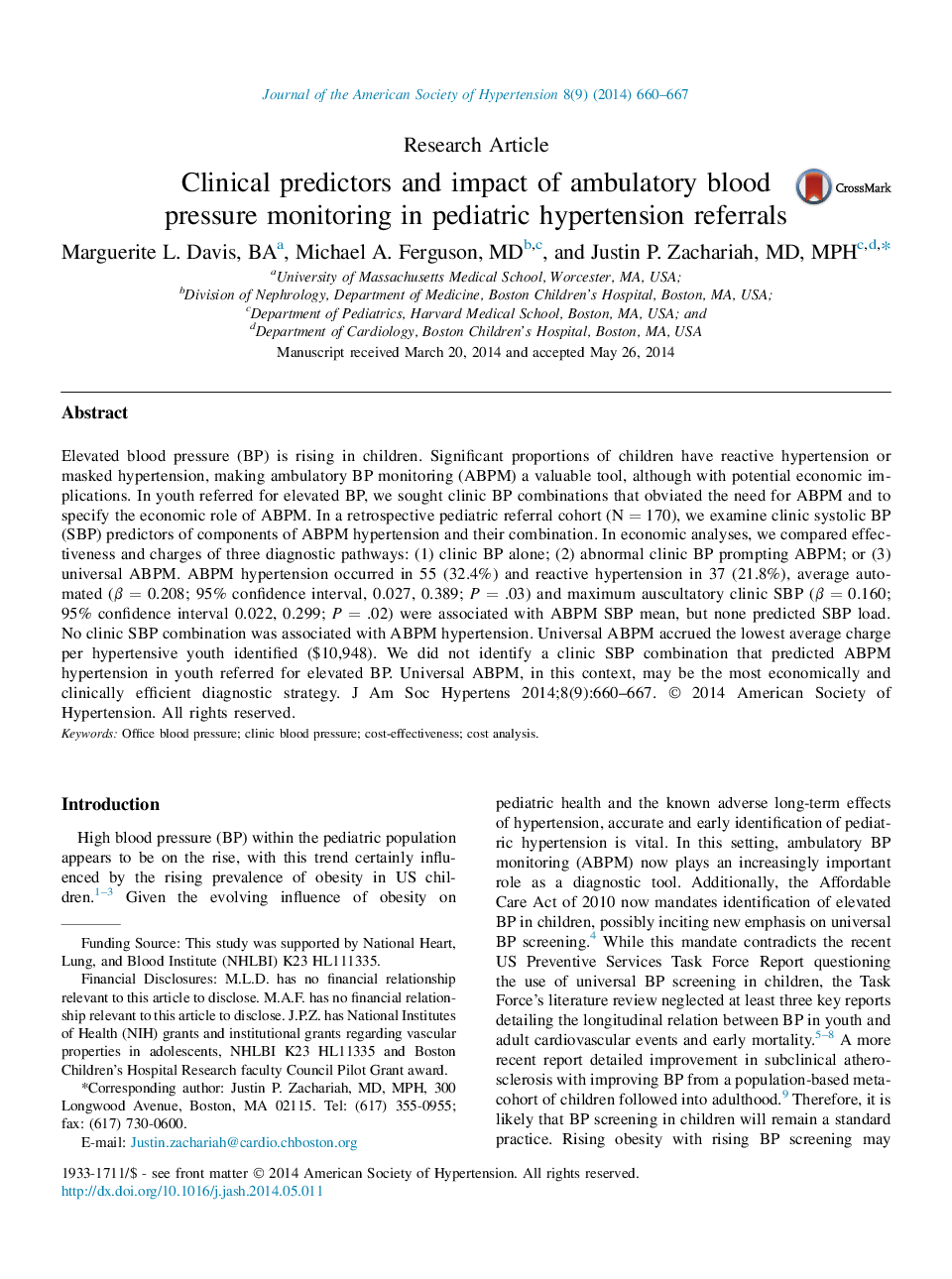| Article ID | Journal | Published Year | Pages | File Type |
|---|---|---|---|---|
| 2956367 | Journal of the American Society of Hypertension | 2014 | 8 Pages |
Elevated blood pressure (BP) is rising in children. Significant proportions of children have reactive hypertension or masked hypertension, making ambulatory BP monitoring (ABPM) a valuable tool, although with potential economic implications. In youth referred for elevated BP, we sought clinic BP combinations that obviated the need for ABPM and to specify the economic role of ABPM. In a retrospective pediatric referral cohort (N = 170), we examine clinic systolic BP (SBP) predictors of components of ABPM hypertension and their combination. In economic analyses, we compared effectiveness and charges of three diagnostic pathways: (1) clinic BP alone; (2) abnormal clinic BP prompting ABPM; or (3) universal ABPM. ABPM hypertension occurred in 55 (32.4%) and reactive hypertension in 37 (21.8%), average automated (β = 0.208; 95% confidence interval, 0.027, 0.389; P = .03) and maximum auscultatory clinic SBP (β = 0.160; 95% confidence interval 0.022, 0.299; P = .02) were associated with ABPM SBP mean, but none predicted SBP load. No clinic SBP combination was associated with ABPM hypertension. Universal ABPM accrued the lowest average charge per hypertensive youth identified ($10,948). We did not identify a clinic SBP combination that predicted ABPM hypertension in youth referred for elevated BP. Universal ABPM, in this context, may be the most economically and clinically efficient diagnostic strategy.
